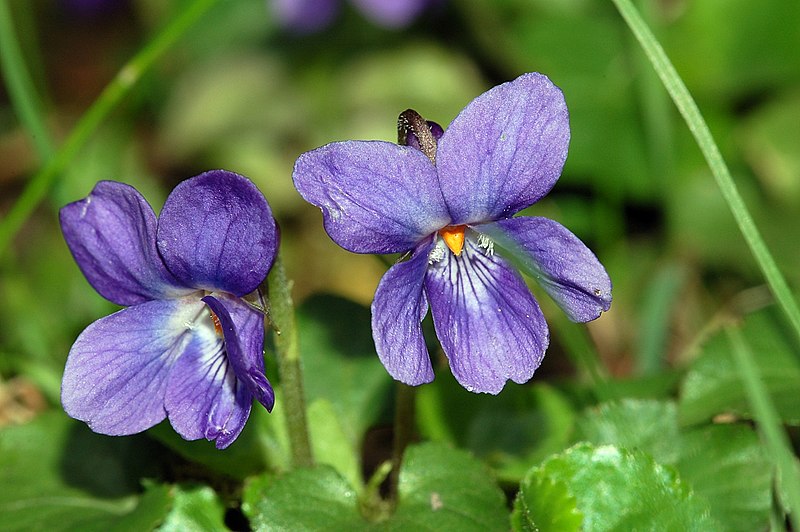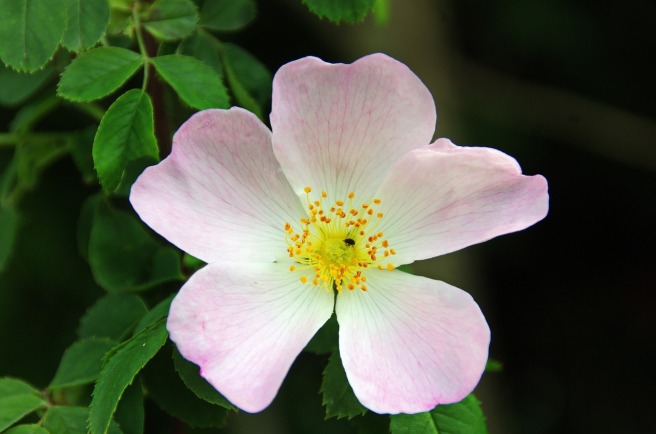
I know a bank where the wild thyme blows,
Where oxlips and the nodding violet grows,
Quite over-canopied with luscious woodbine,
With sweet musk-roses and with eglantine:
There sleeps Titania sometime of the night,
Lull’d in these flowers with dances and delight;
Oberon– A Midsummer Night’s Dream
Oberon, the King of the Fairies, is talking about where Titania, the Fairy Queen, is likely to sleep that night. He lists some sweet smelling herbs and flowers that grow there. Of course, Shakespeare being Shakespeare, he didn’t pick some random plants just because they were easy to rhyme. Each of these plants has layers of meanings.
Here’s a picture of Sir Patrick Stewart playing Oberon. You’re welcome.
It’s important to know that Shakespeare’s audience would not have considered fairies and elves to be imaginary creatures. Then as now, there were skeptics who did not believe in fairies or any other supernatural beings, but many people did and claimed to have interacted with them.
It is impossible to say whether or not Shakespeare believed in fairies but his dramatization of their realm had a deep and lasting effect on fairy lore right up to the present day. Whether or not he believed in them, is of small consideration, compared to how believable he made them to millions of others.

The inclusion of these flowers Wild Thyme, Oxlips, Violets, Woodbine, Musk-Roses, and Eglantine were a kind of offering to Titania, Queen of the Fairies, but more importantly, they were an offering to her representative here in the mundane realms Queen Elizabeth I.
The first of these is Wild Thyme (Thymus serpyllum).
Thyme originates from the Mediterranean and eventually became naturalized to England. It’s strong antiseptic properties made it a revered herb early on. It was used to embalm the dead by the Ancient Egyptians. An association with death and transitions that continued all the way through to the Renaissance when the souls of the murdered were thought to rest in Thyme blossoms. It is one of several fragrant herbs planted on graves in Wales.
It’s name comes to us from the Greek Thymos – meaning to fumigate. Fumigating was the process of applying fragrant smoke to specific parts of the body in order to heal it and drive out unclean spirits.

The Greeks and Romans associated Thyme with courage and soldiers wore it on their way to war. It’s invigorating nature was thought to be a beneficial food to those suffering from an overabundance of the melancholic (sad) temperament but bad for those of a choleric (hot-tempered) disposition. Here’s an image of a melancholy lass that could use some Thyme to pep her up.

Fairies were long associated with the herb and were thought to sleep and dance upon it. Those who wished to see fairies would rub their closed eyes with crushed Thyme. This lovely Thyme fairy was painted by Cicely Mary Barker (1895-1973)
Oxlips (Primula elatior) were commonly confused with Cowslips and Primrose. The scent was thought to induce a pleasant sleep.
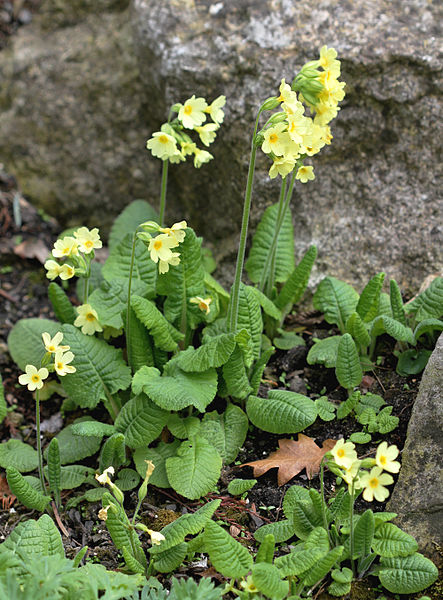
They were among the first flowers to bloom in the Spring – as are Violets (Viola odorata).
According to Mrs.Grieves in her classic A Modern Herbal
“Violets were mentioned frequently by Homer and Virgil. They were used by the Athenians ‘to moderate anger,’ to procure sleep and ‘to comfort and strengthen the heart.’ Pliny prescribes a liniment of Violet root and vinegar for gout and disorder of the spleen, and states that a garland or chaplet of Violets worn about the head will dispel the fumes of wine and prevent headache and dizziness.
The ancient Britons used the flowers as a cosmetic, and in a Celtic poem they are recommended to be employed steeped in goats’ milk to increase female beauty, and in the Anglo-Saxon translation of the Herbarium of Apuleius (tenth century), the herb V. purpureum is recommended ‘for new wounds and eke for old’ and for ‘hardness of the maw.”
Violets were a popular motif in the Tudor era. This 16th century shirt cuff is beautifully embroidered with little violets.

Woodbine is sometimes interpreted to be another name for Honeysuckle in Shakespeare’s work but that is disputed because Titania refers to them as two different plants later in the text.
Sleep thou, and I will wind thee in my arms.
Fairies, begone, and be all ways away.
[Exeunt fairies]
So doth the woodbine the sweet honeysuckle
Titania – A Midsummer Night’s dream

Woodbine may have been a generic term for any woody climber. Perhaps it is fragrant in Titania’s bower because (as Titania noted) it is entwined with Honeysuckle. It must be remembered that this is Titania’s personal bower. A place that has been denied to her consort, Oberon, because they are in the middle of a rampaging custody battle that has turned the natural and supernatural worlds topsy-turvy.
Titania, as Queen of the Fairies, is more than just the reigning monarch of nature spirits. She is a Goddess. She has to be because she is a Queen. She rules by divine right – her own. Elizabeth I and every other King and Queen, were deemed to be the divine made flesh. The “Divine Right of Kings” had created power struggles between Catholic monarchs and Popes for centuries.
It was the kind of topic that would have caused intense, hushed, and extremely dangerous theological discussions. Where does the divine authority of a ruler end and the Pope’s begin? Henry VIII put all such speculation to an end when he founded his own Church of England and installed himself at the head of it.
Elizabeth followed her father’s lead, and upon her ascension re-instituted the Church of England, and declared herself divine. It would have been odd at the time if she had not.
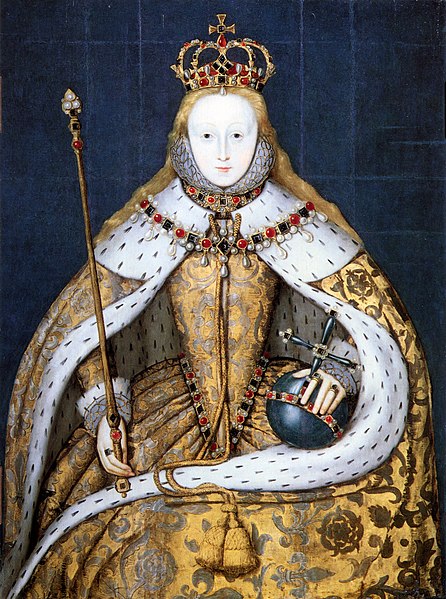
Shakespeare’s acting troupe, The High Chamberlain’s Men, worked directly for the Queen, and later as, The King’s Men, worked for King James. As the Queen’s employee it behooved him to include flattering homages to the Queen whenever possible. In A Midsummer Night’s Dream she seems to be in three places at once, as Titania, as Hippolyta, the warrior Queen of the Amazons, and as Hermia, the rebellious daughter who refuses to wed according to her father’s dictates.
However it is Titania, the Goddess, who we are supposed to see Elizabeth I represented in the most strongly. The reign of Elizabeth I was more than a mere dynasty. It was a cult. She was considered to be the personification of the Greek Goddess of Justice, Astraea, which is a topic which deserves it’s own post.
Elizabeth I, like any Goddess, had flora and fauna as part of her iconography. Her animal was the ermine.

Her flowers were the Rose and Eglantine. So – coming back to Oberon’s description of Titania’s bower we read.
I know a bank where the wild thyme blows,
Where oxlips and the nodding violet grows,
Quite over-canopied with luscious woodbine,
With sweet musk-roses and with eglantine:
There sleeps Titania sometime of the night,
Lull’d in these flowers with dances and delight;
All roses were special to Elizabeth I because she was an English Queen. The Tudor rose was (and still is) the emblem of England.

Musk roses (Rosa moschata) were a particular kind of climbing rose that connoted sexual ripeness and receptivity because they did, indeed, smell like musk.
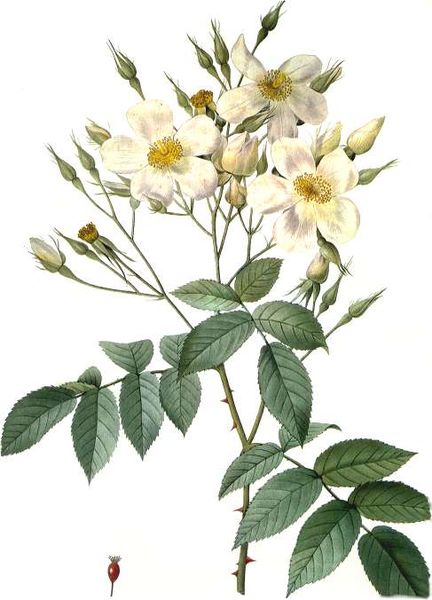
Eglantine (Rosa rubiginosa), however, was the personal emblem of Elizabeth herself. It’s insertion at the very end of the list is meant to help us make the association between Elizabeth and Titania and to make sure that she saw it too.
“Eglantine” is the French word for Sweet Briar or Briar Rose which today can mean any number of old fashioned bramble roses. This lovely personification of Eglantine was painted by Walter crane in 1906.

The word eglantine derives from the Latin “aculeus” which means “spiny” or “thorny.” It’s symbolic meaning is “I wound to heal” which is a somewhat Machiavellian motto for a monarch. Here is an image of Elizabeth I from 1588 after the English defeat of the Spanish Armada which was seen as proof that the English, did indeed, have a Goddess on their side. She is surrounded by Tudor roses to our left and Eglantine to our right.

Shakespeare, with his list of carefully selected fragrant flora, has created a bower fit for a Queen.

Titania Sleeping by Arthur Rackham 1908
